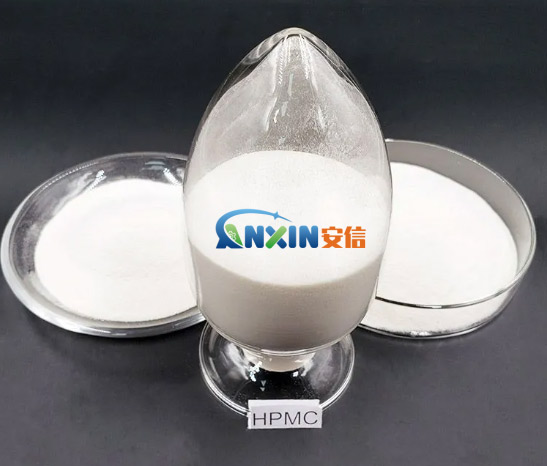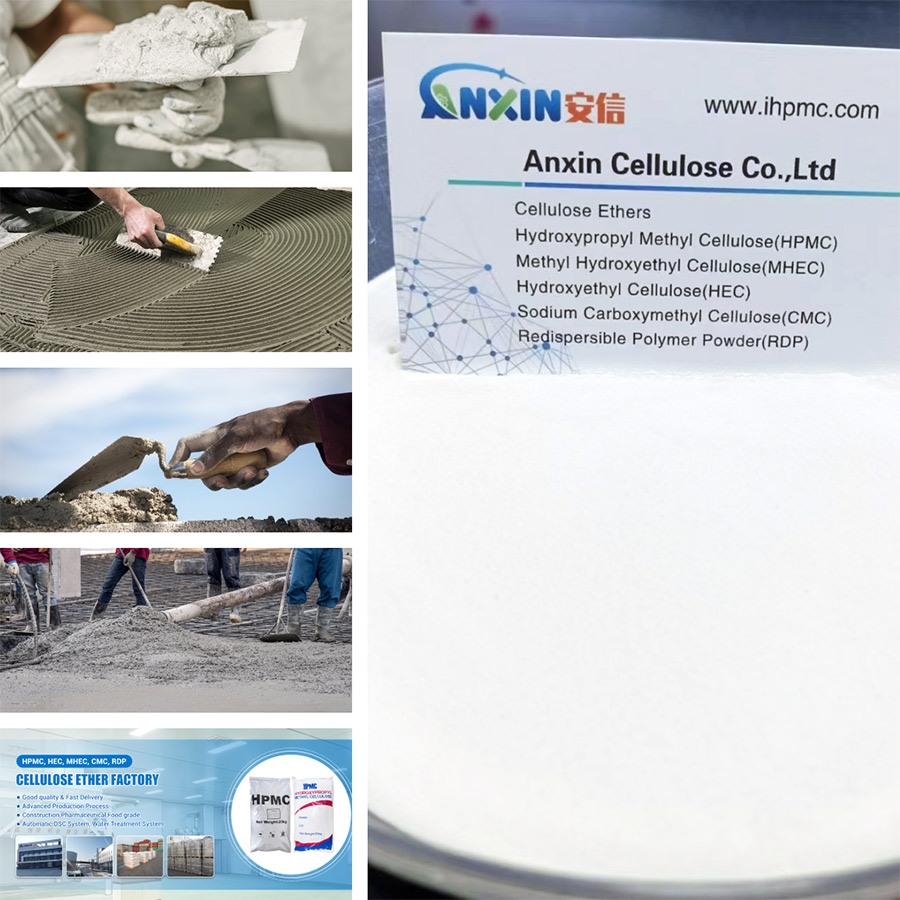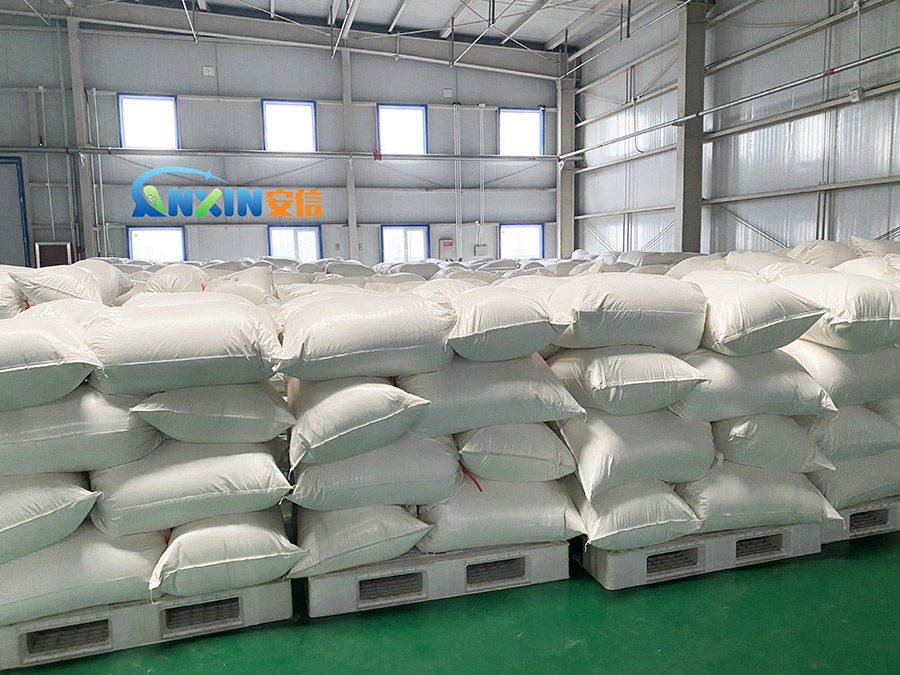Hydroxypropyl Methylcellulose (HPMC) is an important building material additive, widely used in cement mortar, dry mortar, coatings and other fields. HPMC plays a vital role in the water retention of mortar, and can significantly improve the workability, fluidity, adhesion and crack resistance of mortar. Especially in modern construction, it plays an irreplaceable role in improving the quality and construction effect of mortar.

1. Basic characteristics of HPMC
HPMC is a cellulose derivative modified by cellulose chemistry, with good water solubility, adhesion and thickening properties. AnxinCel®HPMC molecules contain two groups, hydroxypropyl and methyl, which makes it have the characteristics of combining hydrophilicity and hydrophobicity, and can effectively play its role under different environmental conditions. Its main functions include thickening, water retention, improving the rheology and adhesion of mortar, etc.
2. Definition and importance of water retention
The water retention of mortar refers to the ability of mortar to retain water during the construction process. The loss of water in mortar directly affects its hardening process, strength and final performance. If the water evaporates too quickly, the cement and other cementitious materials in the mortar will not have enough time to undergo hydration reaction, resulting in insufficient mortar strength and poor adhesion. Therefore, good water retention is the key to ensuring the quality of mortar.
3. The effect of HPMC on mortar water retention
The addition of HPMC to mortar can significantly improve the water retention of mortar, which is specifically manifested in the following aspects:
(1) Improving the water retention capacity of mortar
HPMC can form a hydrogel-like structure in mortar, which can absorb and retain a large amount of water, thereby delaying the evaporation of water. Especially when constructing in high temperature or dry environment, the water retention of HPMC plays an important role. By improving water retention, HPMC can ensure that the water in the mortar can fully participate in the hydration reaction of cement and improve the strength of the mortar.
(2) Improving the fluidity and operability of mortar
During the construction process, the mortar needs to maintain a certain fluidity to facilitate the operation of construction personnel. Good water retention can effectively slow down the drying speed of mortar, making it more ductile and convenient for construction workers to carry out operations such as smearing and scraping. In addition, HPMC can also improve the viscosity of mortar and prevent mortar separation or sedimentation, thereby maintaining its uniformity.
(3) Preventing mortar surface cracking
After HPMC improves the water retention of mortar, it can reduce the rapid evaporation of water on the mortar surface and reduce the risk of cracking. Especially in an environment with high temperature or low humidity, rapid evaporation of water can easily cause cracks on the mortar surface. HPMC helps control the moisture balance of mortar by slowing down water loss, maintaining the integrity of mortar and avoiding the formation of cracks.
(4) Prolonging the open time of mortar
The open time of mortar refers to the time that mortar can be operated during the construction process. Too short an open time will affect the construction efficiency. The addition of HPMC can effectively prolong the open time of mortar, giving construction workers more time to carry out operations such as scraping and smearing. Especially in complex construction environments, prolonging the open time can ensure the adhesion and operability of mortar.

4. Mechanism of HPMC’s influence on mortar water retention
The main mechanisms of HPMC in improving mortar water retention are as follows:
(1) Hydration and molecular structure
HPMC molecules contain a large number of hydrophilic hydroxyl (-OH) and hydroxypropyl (-CH2OH) groups, which can form hydrogen bonds with water molecules and enhance the adsorption of water molecules. In addition, HPMC has a large molecular structure and can form a three-dimensional network structure in the mortar, which can capture and retain water and slow down the evaporation rate of water.
(2) Increase the consistency and viscosity of the mortar
When AnxinCel®HPMC is added to the mortar as a thickener, it will significantly increase the consistency and viscosity of the mortar, making the mortar more stable and reducing water loss. Especially in a relatively dry construction environment, the thickening effect of HPMC helps to improve the mortar’s anti-cracking performance.
(3) Improve the structural stability of the mortar
HPMC can enhance the cohesion of the mortar and improve the structural stability of the mortar through its intermolecular interactions. This stability allows the moisture of the mortar to be maintained between the cement particles for a long time, thereby ensuring the full reaction of cement and water and enhancing the strength of the mortar.
5. The effect of HPMC in practical applications
In practical applications, HPMC is usually used together with other additives (such as plasticizers, dispersants, etc.) to achieve the best mortar performance. Through reasonable proportions, HPMC can play different roles in different types of mortars. For example, in ordinary cement mortar, cementitious mortar, dry mortar, etc., it can effectively improve the water retention and other properties of the mortar.

The role of HPMC in mortar cannot be underestimated. It significantly improves the quality and use effect of mortar by improving the water retention of mortar, extending the open time, and improving construction performance. In modern construction, with the increasing complexity of construction technology and the continuous improvement of mortar performance requirements, HPMC, as a key additive, is playing an increasingly important role.
Post time: Feb-15-2025